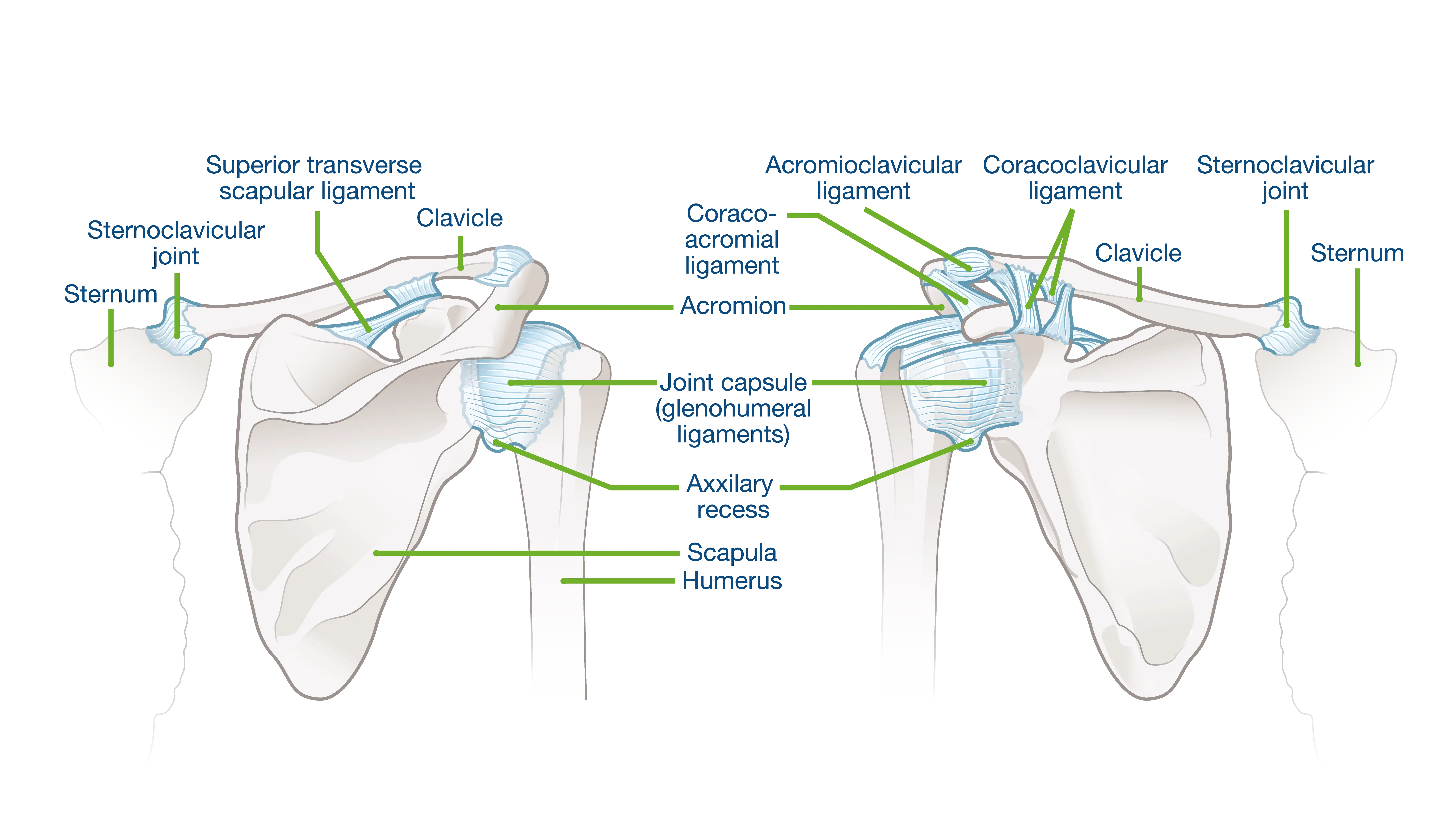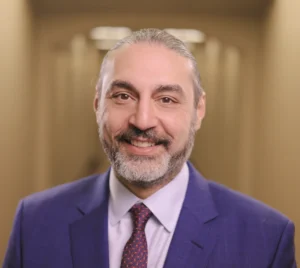Reverse shoulder replacement surgery is a procedure designed for individuals with severe shoulder problems, particularly when the rotator cuff is too damaged to function properly. In this post, we’ll explain what reverse shoulder replacement is, who may benefit, and what to expect from the procedure.
Key Takeaways
- Reverse shoulder replacement changes the mechanics of the shoulder so the deltoid muscle, rather than the rotator cuff, can power movement.
- This procedure may benefit individuals with irreparable rotator cuff damage, advanced arthritis, and certain complex fractures.
- Recovery usually involves a period of arm immobilization, pain management, and physical therapy to gradually restore strength and mobility.
Understanding Reverse Shoulder Replacement
Reverse shoulder replacement surgery is a specialized procedure designed to address severe shoulder conditions that other treatments cannot effectively manage. Unlike traditional shoulder replacements, which generally rely on the rotator cuff muscles for shoulder movement, reverse shoulder replacements shift the mechanics of the shoulder so the deltoid muscle can power arm movement. This innovative approach helps enable function even when the rotator cuff is compromised.

Anatomy of the Shoulder Joint
The shoulder joint is a ball-and-socket structure formed by the humerus (upper arm bone), scapula (shoulder blade), and clavicle (collarbone). It allows for a wide range of motion, making it one of the most flexible joints in the human body. The joint is stabilized by a group of tendons called the rotator cuff and a large muscle called the deltoid.

In a healthy shoulder, the rotator cuff muscles and rotator cuff tendons work together to keep the ball of the upper arm bone centered in the shoulder socket, allowing for smooth and controlled movement. However, when these muscles and tendons are damaged, as in the case of massive rotator cuff tears or rotator cuff tear arthropathy, the shoulder joint can lose its stability and functionality.
Reverse vs. Traditional Shoulder Replacement
The primary difference between reverse shoulder replacement and traditional shoulder replacement lies in the positioning of the ball and socket components. In a reverse shoulder replacement, the ball is attached to the shoulder blade. The socket is attached to the upper arm bone, effectively switching the normal anatomy of the shoulder joint.
Traditional shoulder replacements, on the other hand, are designed to mimic the natural anatomy of the shoulder joint. They can be effective for conditions like shoulder arthritis where the rotator cuff is intact.
However, traditional shoulder replacements are often less effective for conditions like rotator cuff tear arthropathy or massive rotator cuff tears, where the rotator cuff cannot support the new shoulder joint. This makes reverse shoulder replacement a valuable option for patients with severe rotator cuff damage.
Candidates for Reverse Shoulder Replacement
Factors considered when evaluating candidacy for reverse shoulder replacement include:
- Overall health
- Age
- Bone quality
- Current shoulder function
This procedure is most often recommended for patients with irreparable rotator cuff tears, complex shoulder fractures, or severe arthritis with rotator cuff involvement.
Preparing for Surgery
Preparation for reverse shoulder replacement surgery typically involves the following:
- A thorough evaluation, including a physical exam and imaging studies to assess the extent of shoulder damage.
- Reviews of medical history and current medications.
- Discussion of surgical risks and benefits.
Patients may be advised to stop taking certain medications and to prepare their home to support a smooth recovery post-surgery.
The Surgical Procedure
Reverse shoulder replacement is typically performed under general anesthesia, and the operation usually takes about one to two hours, though the exact time can vary depending on the patient and the complexity of the case.
Your experienced shoulder specialist will start by making an incision to access the joint. Once the joint is exposed, the damaged structures are carefully removed and prepared for the implant. In a reverse replacement, the normal anatomy is altered: a metal ball is secured to the shoulder blade (scapula), while a plastic socket is attached to the upper arm bone (humerus).
The placement of the components is carefully planned to fit the structure. To complete the surgery, the prosthetics will be placed, tested for smooth movement, and the incision will be closed.
Postoperative Care and Recovery
Recovery involves immediate post-surgery care, followed by several phases of rehabilitation. While recovery timelines and steps can vary between patients, in the following subsections, we’ll take a closer look at these phases and recommendations.
Immediate Post-Surgery Care
After surgery, the patient will be moved to the recovery room for monitoring of vital signs and pain levels. Many patients are able to return home the same day as the procedure, but others may be advised to stay overnight for observation.
Following discharge, nonsteroidal anti-inflammatory drugs (NSAIDs) and applying ice to the shoulder may be recommended to help reduce pain and swelling. Patients are often advised to keep their arm in a sling for four to six weeks following the surgery to protect the healing site and prevent complications.
Physical Therapy and Rehabilitation
Physical therapy is usually an essential component of the recovery process after reverse shoulder replacement surgery. Engaging in prescribed exercises can help strengthen the shoulder muscles and promote healing. Physical therapy sessions focus on restoring shoulder mobility and gradually increasing the range of motion.
Patients should expect to participate in physical therapy for several weeks or even months, depending on their individual progress and shoulder condition.
Long-Term Recovery
Long-term recovery after reverse shoulder replacement usually takes around six months to a year, though it can vary between patients. During this period, patients are typically advised to avoid high-intensity activities and heavy lifting. Follow-up appointments may be scheduled to monitor healing and function.
Summary
Reverse shoulder replacement can be an effective option for patients with advanced rotator cuff damage, arthritis, or complex fractures. By understanding the procedure, its benefits, and the recovery process, patients can make informed decisions about their treatment options. With proper rehabilitation and realistic expectations, many patients achieve meaningful improvements in function and quality of life.
Frequently Asked Questions
What conditions can reverse shoulder replacement treat?
Reverse shoulder replacement has been used to treat massive rotator cuff tears, rotator cuff tear arthropathy, and some complex fractures.
How long does the recovery process take after reverse shoulder replacement surgery?
The recovery process after reverse shoulder replacement surgery typically takes about six months to a year, with many patients able to resume light activities within a few weeks.
What are the main differences between reverse shoulder replacement and traditional shoulder replacement?
The primary difference between reverse shoulder replacement and traditional shoulder replacement lies in the positioning of the ball and socket components. The reverse shoulder replacement design can be particularly beneficial for patients with severe rotator cuff issues.
How do I prepare for reverse shoulder replacement surgery?
To prepare for reverse shoulder replacement surgery, patients typically have a thorough evaluation with their surgical team, a review of medical history and medications, and a discussion about risks and benefits. Additionally, it may be helpful to plan support for daily activities when returning home after surgery.



